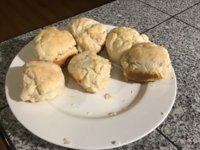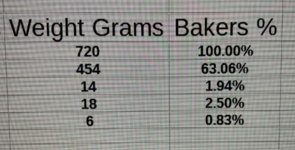GreenDragon
Well-Known Member
Try it with only 1/4 whole wheat next time. It really weighs the dough down. Looks delicious though. Will make great toast. Or even better, bread pudding!

My store-boughten sandwich bread is 100% whole wheat so there's some way to do it
My whole wheat bread was 50% white bread flour. But it was unquestionably substantial (like a 1955 Chevy sedan in a junk yard car crusher) and filling--yup. Definitely filling. What it truly lacked was patience. I should have allow the second rise to continue much longer....bread should be substantial and filling.
So, is percentage whole wheat measured as a baker's percent or as an actual percent?My whole wheat bread was 50% white bread flour. But it was unquestionably substantial (like a 1955 Chevy sedan in a junk yard car crusher) and filling--yup. Definitely filling. What it truly lacked was patience. I should have allow the second rise to continue much longer.
Bob








We discuss any variety of tobacco, as well as numerous approaches to growing, harvesting, curing, and finishing your crop. Our members will attempt to provide experience-based answers to your questions.

